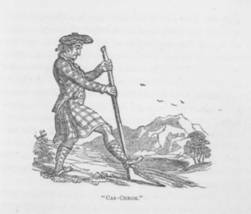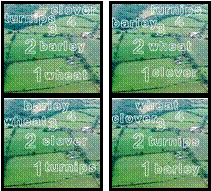Newman Smith High School Robotics Team One Team 07-0071 |
|||||||||
|
History of Agricultural Robotics Early Civilization Tools During the Stone Age (2,000,000-3500 BCE), ancient peoples used simple tools such as spears, nets and various other traps to catch their prey. [2] Mesopotamians invented the wooden plow around 3000 BCE (Before Common Era), and by 2800 BCE, they had learned how to make bronze tools. [3] The In-Between Years (2500 BCE-1750 AD) The use of animals has been prominent in agriculture. Archeologists believe that dogs were the first animals to be domesticated. Dogs helped early peoples by hunting and also kept rats and other rodents from eating the crops. [2]
The caschrom was invented during the middle ages to till the land. By pushing the foot peg into the ground and pulling the handle backwards, a farmer could tear up the soil and flip the dirt to either side. [5] Agricultural Revolution The Agricultural Revolution lasted from about 1750-1900 when farming in America changed drastically. [6] The main cause of the Agricultural Revolution was the introduction of machines. A well-known machine introduced during this time was Eli Whitney’s cotton gin, one of the first machines used in agriculture. Eli Whitney, born in Massachusetts, patented his cotton gin on March 14, 1794. This machine was able to quickly separate cottonseed from cotton fibers, creating up to fifty pounds of cleaned cotton a day, the equivalent of hundreds of man-hours. As the first major machine of the agricultural revolution, the cotton gin led the way to our modern agricultural machines. [7]
Another major change that occurred during the Agricultural Revolution was the creation of the United States Department of Agriculture, or the USDA. On May 15, 1862, President Lincoln created the USDA to improve agricultural practices and standards throughout the country. At first, the USDA worked only to increase productivity on farms, but starting in the 1880s, work was also done to improve the quality and health standards of these farms. The research done by the USDA today helps to create robots and other technological improvements for American farms. [10] Nineteenth and Twentieth Centuries The nineteenth and twentieth centuries, AKA the eighteen and nineteen hundreds, was a very busy time for agricultural development. During this time period, some of our modern agricultural machines, such as the lawnmower and the tractor, were invented and put to use worldwide.
|
||||||||

